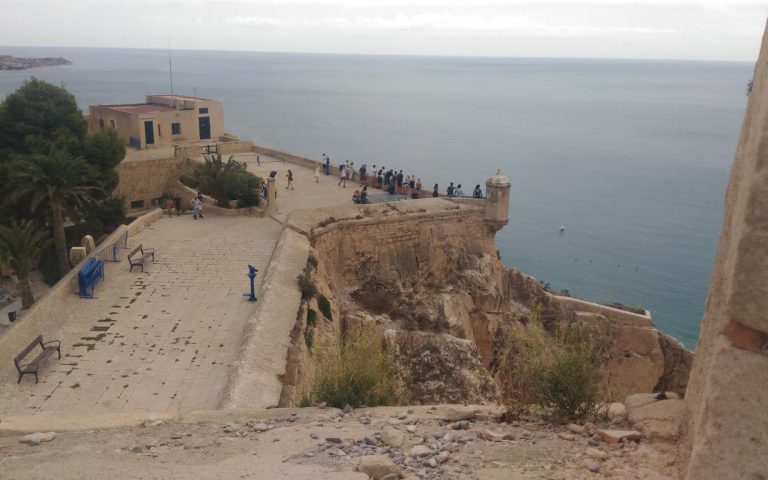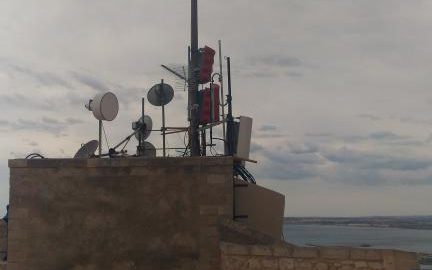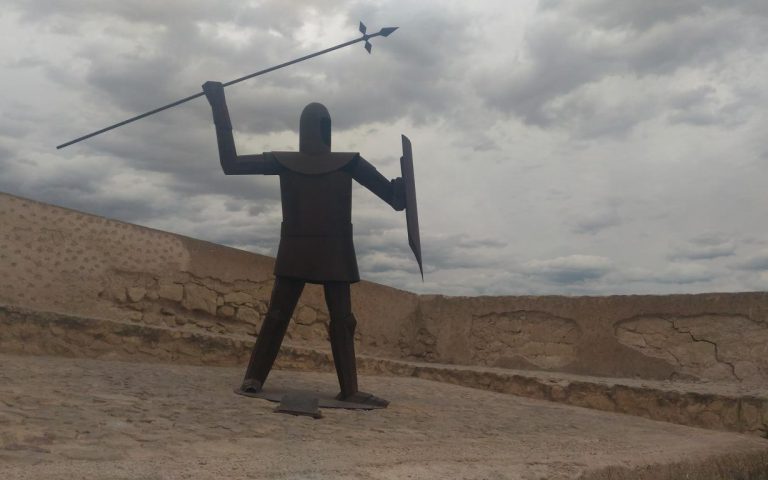All our French friends seem to have quite a negative opinion of Alicante. “Why do you want to go there?” they all asked. And viewed from a boat sailing along the Spanish coast, I must admit it does not look special, or at least it does not look much different than all the other coastal Spanish cities with their high-rises and hotel complexes. My desire to visit Alicante had nothing to do with beauty or history and everything to do with mystory. You see, the first time I went off on my own and traveled to Europe, I was 18 and landed in Alicante. Being the nerd that I was, I found the perfect excuse to get away for the summer months: Spanish courses in Spain that would count towards my cegep degree. And while in Europe, I can’t not visit my mother’s homeland. So I spent three weeks traveling throughout the Netherlands with my Oma, and then spent a month of Alicante where I struggled to learn Spanish – and didn’t feel I had learned much – and successfully tanned for the first time in my life. I just wanted to go back to stroll through memory lane.
Turns out, my memory isn’t that good. I remembered the Esplanade that follows the coast and that I used to take every day in the afternoons to make my way towards the beach. Today it has little white huts that sell the regular stuff to tourists: handmade jewellery that looks alike no matter where you go, leather bracelets, artisanal soap, etc. Back in the day, the hustlers of the Esplanada were illegal immigrants from Senegal who sold belts and African wooden statues. From one of them I bought a beautiful bedside table that I eventually gave to my brother when I moved to London. I also remembered the flat I lived in, but only the second day I went hunting for it. The first day I went on my own, jogging, but couldn’t locate the street. It’s only when I went back with Pierrick and a map that I found my old street. The building is still there. I recognized the front yard but not the shops that line the ground floor. And the fetish clothing store that was at the corner where I bought my awesome white boots is no more.
Still, it was nice to go back and visit Alicante. If the whole port complex was developed in 1996, radically changing the seafront from what I remember in 1994, the old city has remained true to itself, and beautiful like all old European cities. Even Pierrick was won over, and called back home to tell our French friends that Alicante is actually quite a pretty city that’s worth a visit.
My main disappointment was with the city’s tourism. Alicante has an airport and boat shuttles to Algeria. There are many English tourists, and many bars and restaurants that cater to them. The city is at the foot of Mount Benacantil, on the top of which there is a Medieval fortress and the Santa Barbara Castle. Alicante has developed an underground passageway that leads to a lift that brings tourists up from sea level to the Castle, but once you arrive there, well there is not much to see. There is a map and you could rent an audio-guide, but there are not descriptions or explanations given to any of the standing monuments. Nothing to put the visitor in context. We did find some panels that retold a story, but they were only in Spanish. I felt like I was visiting ruins rather than experience a part of Alicante’s past. This frustrated me, so we made our way down.
Walking along the city streets, we tumbled upon MUBAG, the Gravina Museum. Pierrick had seen its description in a guide and wanted to visit it. It houses local artists, which he is always happy to discover. In addition to its permanent exhibition, on show were Emilio Varela and Antonio Fillol Granell (very good!). The nerd in me has not changed. I like reading the signs in a museum. I like context to an artist and his/her work. In MUBAG, all signs are in Spanish and Valencian. Now, I understand the will to preserve one’s language, but can we be clear on the fact that all those who can read Valencian can also read Spanish? So why not sacrifice a bit of space, here and there, to put in a few passages in English? Is this museum not meant for foreign tourists?
After these two frustrating visits, we made our way to the Cortes Engles to buy a few supplies. There, my memory served me right in that the staff seldom speaks English or French. We then sat down to “decansar” and had a drink; I had a glass of rosé from an Alicante vineyard. Basically we did what tourists seem expected to do: we shopped and we drank.
It was nice to go back, but two nights in the 70EUR/night port were enough. My feet started itching, and Cartagena was next on our route!






